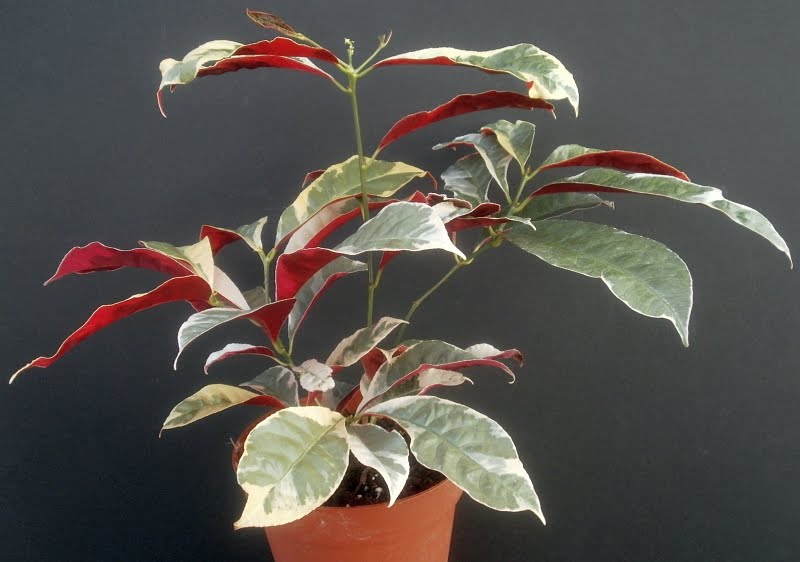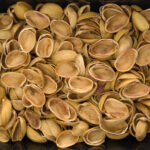The plant with green leaves on top and purple underneath is a captivating botanical specimen renowned for its striking foliage and visual allure. This article delves into the intriguing features, horticultural uses, and cultivation techniques of this distinctive plant, shedding light on its unique charm and appeal.
I. Introduction
Description of the Plant The plant with green leaves on top and purple underneath is characterized by its remarkable foliage, which exhibits a vibrant green hue on the upper surface of the leaves and a rich, purple coloration on the underside. This distinctive color contrast adds depth and visual interest to the plant, making it a standout feature in any garden or landscape setting.
Intriguing Characteristics and Visual Appeal One of the most striking features of this plant is its eye-catching foliage, which draws attention and admiration from observers. The juxtaposition of green and purple hues creates a captivating display of color, adding a dynamic element to gardens and landscapes. Beyond its aesthetic appeal, this plant also boasts unique botanical characteristics that contribute to its allure and desirability.
Common Names and Varieties The plant with green leaves on top and purple underneath is known by various common names, reflecting its widespread popularity and recognition among gardeners and plant enthusiasts. Some commonly used names include “Purple-leaf Plant,” “Green and Purple Foliage Plant,” and “Bicolor Leaf Plant.” Additionally, there are several cultivars and varieties of this plant available, each with its own distinct leaf shapes, sizes, and color intensities.
II. Botanical Features
Leaf Structure and Coloration The distinctive coloration of the plant’s leaves is attributed to the distribution of pigments within its tissues. Chlorophyll, responsible for the green color of leaves, is concentrated in the upper epidermis, where it facilitates photosynthesis and energy production. Anthocyanins, pigments responsible for the purple coloration, are predominantly found in the lower epidermis, providing protection against excess light and UV radiation.
Growth Habits and Environmental Preferences The plant with green leaves on top and purple underneath exhibits a range of growth habits and environmental preferences shaped by its native habitats and ecological adaptations. Typically found in tropical or subtropical regions, this plant thrives in warm, humid climates with well-draining soil and ample sunlight. However, it can also adapt to a variety of environmental conditions, making it suitable for cultivation in diverse geographic regions.
III. Horticultural Uses and Benefits
Ornamental Value in Landscaping The striking foliage of the plant with green leaves on top and purple underneath makes it a popular choice for ornamental planting in gardens, parks, and landscapes. Its bold color contrast and unique leaf morphology create visual interest and focal points, enhancing the overall aesthetic appeal of outdoor spaces. Whether used as a standalone specimen or incorporated into mixed plantings, this plant adds texture, color, and dimension to any landscape design.
Ecological Significance and Ecosystem Contributions In addition to its ornamental value, the plant with green leaves on top and purple underneath plays a significant role in supporting biodiversity and ecosystem health. Its foliage provides shelter and foraging opportunities for various wildlife species, including insects, birds, and small mammals. Furthermore, the plant’s extensive root system helps stabilize soil, prevent erosion, and improve soil structure, making it an invaluable asset in ecological restoration and conservation efforts.
IV. Cultivation and Maintenance
Soil Requirements and pH Preferences To ensure optimal growth and development, the plant with green leaves on top and purple underneath requires well-draining soil with a slightly acidic to neutral pH range. Sandy loam or loamy soil types are ideal, providing adequate drainage while retaining sufficient moisture for root uptake. Amending the soil with organic matter, such as compost or leaf mold, can improve soil fertility and texture, promoting healthy root growth and nutrient uptake.
Watering and Fertilization Practices Proper watering is essential for the health and vitality of the plant with green leaves on top and purple underneath. While it prefers consistently moist soil, it is important to avoid overwatering, as excess moisture can lead to root rot and other fungal diseases. Watering frequency will vary depending on environmental conditions, with more frequent watering required during periods of hot, dry weather. Additionally, regular fertilization with a balanced, slow-release fertilizer can provide essential nutrients for vigorous growth and vibrant foliage coloration.
V. Conclusion
Summary of the Plant’s Unique Characteristics and Benefits The plant with green leaves on top and purple underneath is a stunning botanical specimen prized for its striking foliage, ecological contributions, and adaptability to diverse growing conditions. With its captivating color contrast and ornamental appeal, it continues to be a favorite choice for gardeners and landscapers seeking to enhance the beauty and biodiversity of outdoor spaces.
Encouragement for Incorporating it into Gardens and Landscapes Whether used as a focal point in a garden bed, a backdrop for a mixed border, or a container specimen on a patio or balcony, the plant with green leaves on top and purple underneath offers endless possibilities for creative expression and landscape design. Gardeners are encouraged to experiment with different planting schemes and combinations to discover the full potential of this versatile and visually striking plant.
Closing Remarks on its Enduring Popularity and Appeal As trends come and go in the world of gardening and landscaping, the timeless beauty and enduring popularity of the plant with green leaves on top and purple underneath remain constant. Its ability to captivate the imagination and elevate the aesthetic appeal of any outdoor setting ensure that it will continue to be cherished by gardeners and plant enthusiasts for generations to come.



